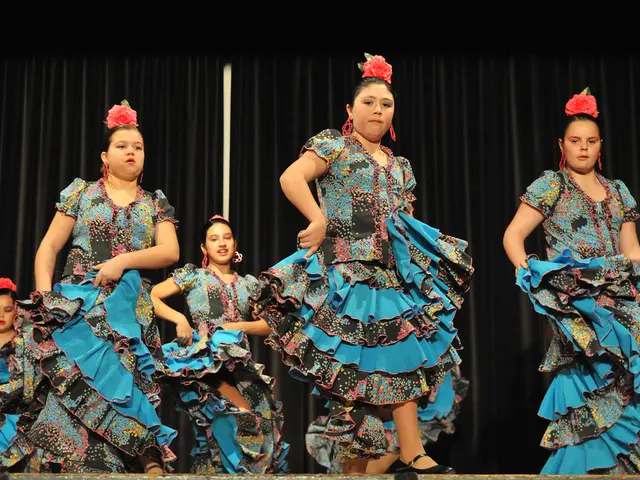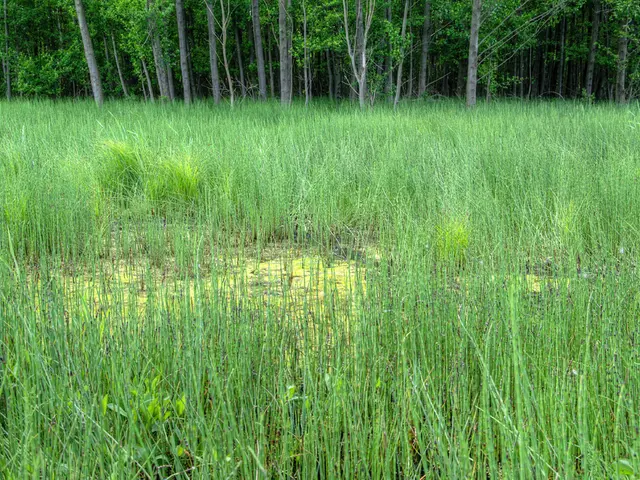Evolution of Beaks in Birds to Match Flowers - Illustrative Instances Demonstrating this Adaptation
Welcome to the captivating dance between birds and flowers! It's a tale of evolution, adaptation, and survival that's as mesmerizing as it is intricate.
In this partnership, both species have evolved to suit each other's needs, creating extraordinary pairings that border on the unbelievable. Flowers have developed intricate shapes and vivid colors, designed to attract certain birds. Meanwhile, birds have adapted their beaks and feeding tactics to extract nectar from these flowers.
This silent dialogue between birds and flowers has been playing out for eons, resulting in an incredible array of beak and bloom combinations. Each duo is as functional as it is stunning. So, when you see a bird sipping from a flower, you're witnessing the silent song of coevolution.
The Genesis of Bird-Flower Partnerships
At first glance, it may seem odd that birds would evolve their beaks to suit flowers. But when food is scarce or competition is fierce, evolution gets creative. Birds that could reach nectar in flowers accessed a reliable food source. Over generations, birds with beaks more suited to their floral partners survived and reproduced more.
This pressure turned ordinary beaks into specialized tools, tailor-made for their floral counterparts. It's like nature's version of a lock and key – only the right bird gets the reward, ensuring both the bird and the flower thrive.
The Symbiotic Nature of Pollination
Pollination is the silent hero of this story. When a bird visits a flower for nectar, it's not just feeding itself – it's also helping the plant reproduce. As the bird's beak and head brush against the flower's pollen, grains stick to its feathers and are carried to the next blossom. This process is crucial for many plants to form seeds and fruit.
The more precisely a bird's beak matches a flower's shape, the more effective the pollination. It's a win-win: birds get food, and flowers get a start on the next generation. This mutual benefit has driven some of the most remarkable adaptations in both birds and plants.
A Whirlwind of Evolutionary Change
Tiny differences in beak size and shape can have profound effects on a bird's fate. Birds with slightly longer or more curved beaks may be able to reach nectar that others cannot. Over time, these small advantages add up, leading to beaks so specialized they seem almost custom-made for one type of flower.
The process isn't always smooth – sometimes, environmental changes force birds to adapt quickly, resulting in bursts of evolutionary innovation. This wild reshaping of life is at the heart of the bird-flower partnership story.
Amazing Examples of Coevolution in Action
From the sword-billed hummingbird of South America, whose beak is so long it needs to groom itself with its feet, to the tiny sunbirds of Africa, whose long, thin beaks poke into deep aloes, bird-flower partnerships are astounding examples of the power of evolution.
The Hawaiian honeycreepers, with their diverse beak shapes, are living proof of evolution's ability to sculpt and reshape life in astonishing ways. The Heliconia and hermit hummingbird duo in the tropics demonstrate how flowers can evolve to suit the unique beaks of their favorite pollinators.
An Evolutionary Arms Race
The dance between birds and flowers isn't always a peaceful one. Sometimes, it becomes an evolutionary arms race, with flowers fighting back by developing longer tubes or trickier shapes to keep out less effective pollinators, forcing birds to evolve even longer or more specialized beaks in response.
The result can be astounding – like the sword-billed hummingbird, whose beak is longer than its body, or the hummingbirds of Central and South America that have evolved bills specifically adapted to reach the nectar deep within heliconia flowers.
Protecting the Dance of Life
As the world changes, the future of bird-flower partnerships remains uncertain. Climate change, habitat loss, and invasive species threaten these delicate relationships. But by understanding and appreciating the beauty and complexity of these partnerships, we can work to protect them.
So let's keep watching the dance of hummingbirds and flowers, sunbirds and aloes, and the myriad other partnerships that nature has created. Let's cherish the simple elegance of this silent dialogue and remember that protecting one partner often means protecting both.
- Science has revealed that the evolution of birds' beaks and flowers' shapes are intertwined, resulting from climate change and survival needs.
- The intricate dance between birds and flowers is a testament to the power of ecosystems in adaptation, showcasing a dynamic balance of plants, wildlife, and climate-change.
- The extraordinary bird-flower collaborations offer learning opportunities in environmental-science, personal-growth, and education-and-self-development.
- To conserve these unique coevolutionary pairings, conservation efforts must embrace science, climate-change research, and the appreciation for nature's beauty through lifestyle choices, fashion-and-beauty, food-and-drink, home-and-garden, and social-media platforms.
- By learning about these example-defining partnerships, such as the Hawaiian honeycreepers and the Heliconia and hermit hummingbird duo, we gain insights into the intricacies of evolution.
- In a world where competition for resources is intense, these remarkable relationships highlight the importance of adaptation and the need for proper adaptation strategies in entertainment, books, and the overall global community.
- Protecting the environment and its evolving inhabitants is crucial for the maintenance of diversified ecosystems and the continuation of the dance of life.
- As part of personal growth, adapting one's lifestyle to incorporate eco-friendly options can contribute to the conservation of these partnerships, helping to preserve the richness and intricacy of the evolutionary processes in the environment, books, and social media.
- By nurturing our understanding of the delicate balance between birds, flowers, and their coexistence in the face of climate change and habitat loss, we engage in the dance of coexistence and nurture a lasting appreciation for the world's natural wonders.







